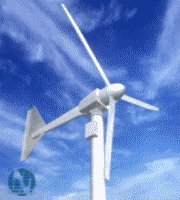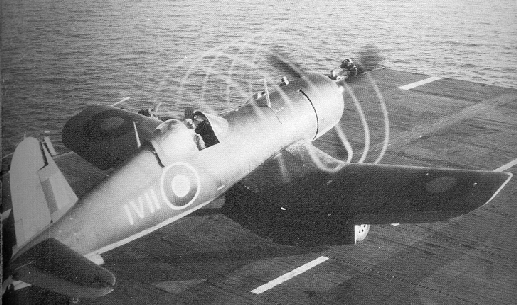| Author |
Message |
dazz
Regular Member

Joined: 15/04/2008
Location: Posts: 78 |
| Posted: 07:50am 28 May 2008 |
 Copy link to clipboard Copy link to clipboard |
 Print this post |
|
Hi All,
I came across this in Wikipedia
"It has been shown empirically that the optimum tip speed ratio for maximum power output occurs at
TSR(max power) = 4*Pi/n
where n is the number of blades."
It sounds good but for a 3 blade turbine this value comes to 4.18
But, I have also seen quite a few discussions of TSR that say well designed 3 blade turbines have a TSR around 6-7
Does anybody know what gives here?
Thanks, Daryl
|
| |
Gill

Senior Member

Joined: 11/11/2006
Location: AustraliaPosts: 669 |
| Posted: 09:56am 28 May 2008 |
 Copy link to clipboard Copy link to clipboard |
 Print this post |
|
Holy Sh*t!!!
My 6 blader should then have a TSR of 2.09.......
That'd make the best tip blade angle something like 22deg.
Of course Wikipedia is always 100% spot on. Right?????
   
But maybe I condemn too soon, I'm not having a good year. Perhaps it would be wise to view the context of the statement. Perhaps rather than power it should read torque? When does an electric motor develop it's max torque? Is it not just before stopping? Not the most efficient speed to be powering an application though? Perhaps the statement is for understanding limits rather than promoting preferred design values?  Edited by Gill 2008-05-29 Edited by Gill 2008-05-29
was working fine... til the smoke got out.
Cheers Gill _Cairns, FNQ |
| |
dazz
Regular Member

Joined: 15/04/2008
Location: Posts: 78 |
| Posted: 04:29pm 28 May 2008 |
 Copy link to clipboard Copy link to clipboard |
 Print this post |
|
I don't know, it's all very confusing!
This site http://www.windmission.dk/workshop/BasicBladeDesign/bladedes ign.html
Says
"Generally can be said, that slow running multi bladed wind turbine rotors operate with tip speed ratios like 1-4, while fast runners use 5-7 as tip speed ratios.
Ian Cummings wants to cut a two bladed rotor. This rotor type usually runs very fast, so let's choose a tip speed ratio of 7."
And other sites talk about TSR's for two blade designs being 6-7. So if 6-7 is good for 2 blades and good for 3 blades then maybe there's not much difference between 2 and 3 in terms of what TSR is good
Daryl
|
| |
KiwiJohn
Guru

Joined: 01/12/2005
Location: New ZealandPosts: 691 |
| Posted: 06:31pm 28 May 2008 |
 Copy link to clipboard Copy link to clipboard |
 Print this post |
|
Hmmmm..... thinking, thinking, more blades means blades get effected by the wake of the blade that went before them? The wake, if we could see it, would look like a helix streaming off the blades, like this.

More blades and/or faster RPM would cause this helix to close up until blades interfere with each other, less blades or slower RPM would open up the helix. For the same wind that is.
Still...thinking.... maybe one could say:
For a low RPM mill use many coarse pitch blades which will have low TSR. For high RPM use fine pitch blades (i.e fine pitch blades) but you must reduce the number of blades to avoid inteference between them.
Am I right? |
| |
Jarbar
Senior Member

Joined: 03/02/2008
Location: AustraliaPosts: 225 |
| Posted: 10:55pm 28 May 2008 |
 Copy link to clipboard Copy link to clipboard |
 Print this post |
|
Hello,would it be worth investigating a counter rotating set of blades.Mekanizmalar from this site has info about how much wind passes through the blades actually doing no work.As the wind glances off the front set of blades I imagine it has had a partial change in the opposite direction.ie blades rotate to the right and wind is glancing off to the left.This would be picked up everytime counter rotating blades cross as well as the unused air flow mentioned above.This could then drive dual counter rotating F&P units.Then maybe that wake could be put to good use? But blades may deflect forward and back wildly from fluctuating air pulses.
Still thinking
Anthony B
"Creativity is detirmined by the way you hold your tounge".My Father
"Your generation will have to correct the problems made by mine".My Grandfather.
|
| |
oztules

Guru

Joined: 26/07/2007
Location: AustraliaPosts: 1686 |
| Posted: 11:52am 29 May 2008 |
 Copy link to clipboard Copy link to clipboard |
 Print this post |
|
I tend to feel that this TSR thing is really very flexible.
The real factor that will determine your designed TSR will have more to do with what you are driving than some empirical maxim.
My water pumper windmill is a TSR less than 1, but pumps water very well. It would make electricity well too.... if I had a very expensive alternator that developed good power at 50 rpm or so attatched to it.
This would be a poor use of magnets and copper. So I'll leave it pumping water as it has done for the last 50 or so years.
The cheapest alternator to use for electricity would of course run at 2000-3000 rpm. This is not terribly useful to us as a decent size prop will not get up to this speed without a twister up its tail.
So we compromise. If we want reasonable power at reasonable wind speed, we will need 3 to 4 meters of blade. If we use your max efficiency as TSR=4 then at 4meters diam and 7m/s wind, then we could look forward to developing somewhere near 800W @ 130rpm.... Still this is a hefty alternator, and does not make good use of the available magnets and copper ie too much of both for the modest outcome.
So we increase the TSR in order to get the alternator down to a reasonable size (or a lot more power for the same size), making reasonable use of magnet material and copper and winding space. We now shoot for say TSR=7. Now we can get our 800w at a more reasonable 230 RPM. This will improve the useable output of the alternator probably 4 times for the same mags and wire weight. (lower resistance in the windings in this case about half (W = (E x E)/R), or we can build a smaller lighter alternator to achieve the same thing as the 130rpm model.
So even if the Wiki statement is true, in the real world we use different yard sticks to measure reasonable and gettable goals.
We could of course shot for TSR 10, which would improve our alternator efficiencies even more, but a noisy dangerous beast would evolve from this course of action, and would involve very much more maintenance from the blade erosion to the bearings etc. It would also require more adherence to proper prop design than is usual for backyard people to undertake, and balancing would be even more critical, as would blade tracking.
So we tend toward the 5-7 tsr range in order to get the best real world performance with non critical tolerances, without being too slow (big alternator) or too fast (noisy, dangerous, and design critical).
Like all things to do with wind, there is a loads of flexibility, and stacks of compromise. Very rarely is any one design parameter "best"..... apart from "nothing describes the power of a wind device more properly than swept area"
However even then, it is matching your desired load to the wind curve and blade characteristics that will dictate success or failure.
Even my old water pumper at only 6 feet diam, will happily shear 1/2 inch bolts that get in the way of the lift rod, bend drive rods and destroy pumps if the pressure outlet gets blocked etc.
Matching the load to the prop is everything.... and it involves the blades, diam, tsr, alternator style and internal resistance, rpm for desired volts out etc etc, almost no one part can be looked at in isolation to the others if a good system is to evolve.
I submit there is no "best" TSR.
.........oztules
Edited by oztules 2008-05-30
Village idiot...or... just another hack out of his depth |
| |
dazz
Regular Member

Joined: 15/04/2008
Location: Posts: 78 |
| Posted: 05:08am 30 May 2008 |
 Copy link to clipboard Copy link to clipboard |
 Print this post |
|
Thanks for that oztules! very helpful 
Daryl
|
| |

